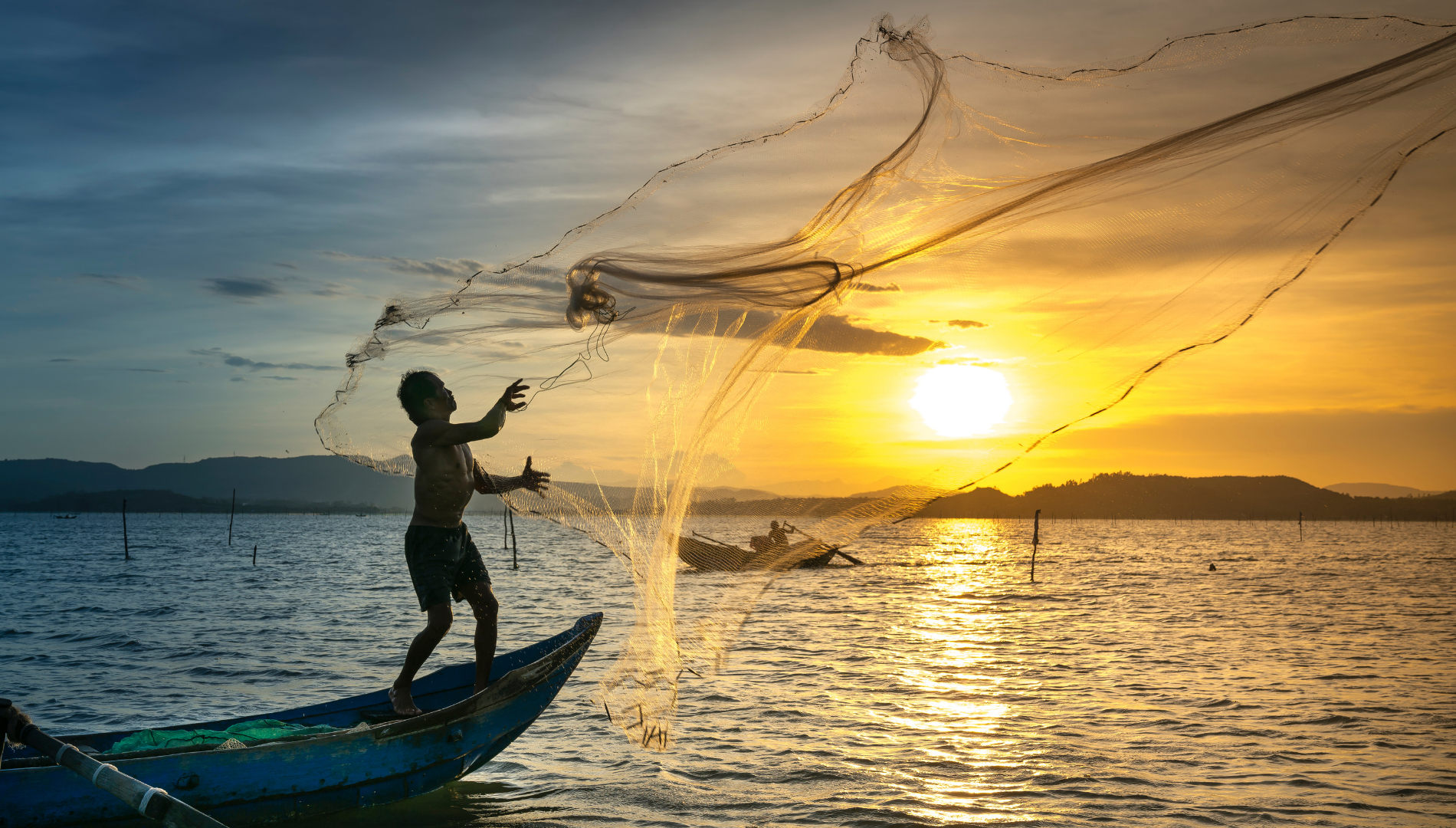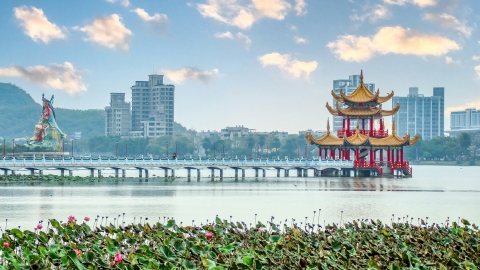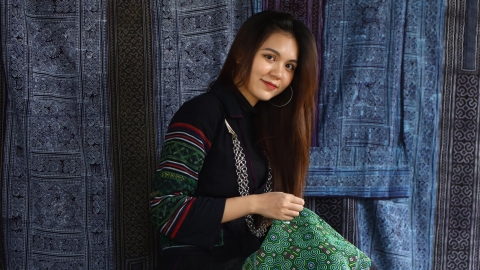Living along the southern coast of the Philippines, Indonesia and Malaysia for over 1,000 years, the Bajau tribe have lived nomadic lives on houseboats, spending most of their lives at sea.
“The ocean is home”
Thinking of the ocean as their home, generations of Bajau people have drifted across the coral reefs of Southeast Asia for centuries. Spending much of their time diving for fish, sea urchins, sea cucumbers and other creatures, they have been nicknamed “mermaid people” due to their excellent diving skills. Some Bajau members claim to be able to hold their breath for up to 13 minutes and dive as deep as 60 meters, while others can comfortably dive 20 to 30 meters in half that time.
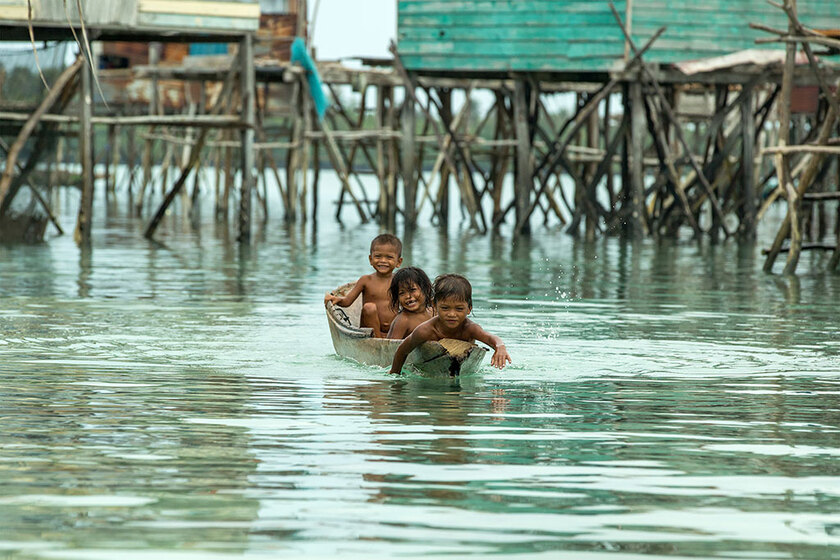
The Bajau Laut people of Indonesia are known as “sea nomads” or “mermaid people”.
An ethnic group of Malay descent, the Bajau have lived almost exclusively on the water for centuries. While other “sea nomad” groups have existed for a long time, the Bajau may be the last remaining sea tribe. The Bajau inhabit Southeast Asia, specifically the southwestern coast of the Philippines. As a nomadic people, they drift from place to place, not tied to any nation, literally or figuratively.
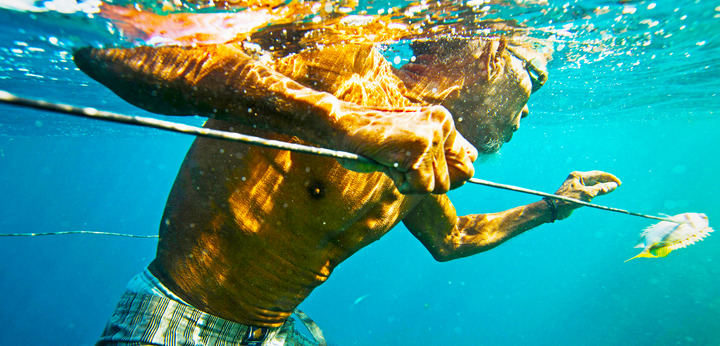
They can free dive and spear fish, as well as being excellent swimmers.
With no official state records or even much of a recorded history, the story of this “mermaid” tribe is rooted in their own unique cultural and folk traditions, with tribal histories passed down orally from generation to generation. “We inherited the sea and the art of diving from our ancestors,” said Ima Baineng, a Bajau fisherman. Regardless of gender or age, Bajau boys, girls and children are all passionate about diving. They can spend up to eight hours a day diving deep into the sea. Some spend up to 60% of their time underwater.
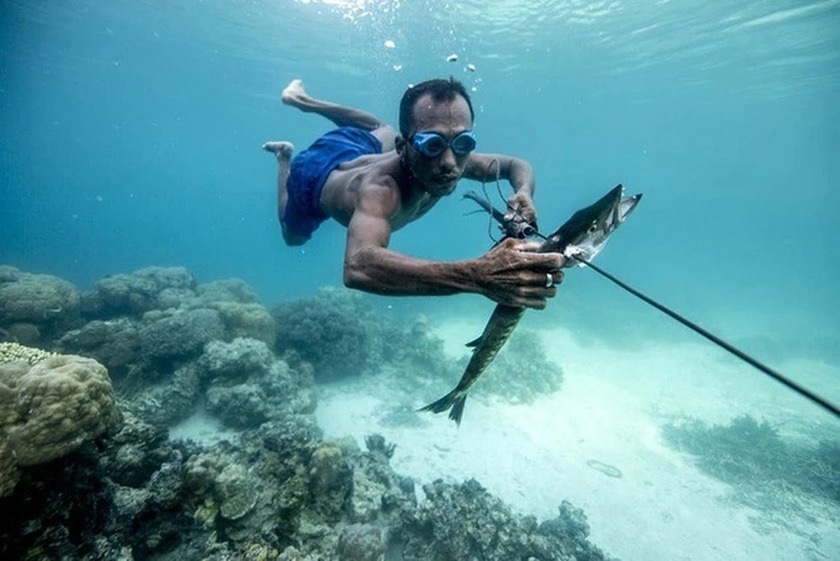
The Bajau people have become the first people shown to possess a genetic makeup adapted for diving.
"Every day, I go to the sea at 4am and come home around noon. Usually, I catch about 15kg of fish. When I was young, I could dive as deep as 20m. Now that I'm old, I only dive down to 16m," said local fisherman Mandor Tembang.
Preserving marine culture as a heritage
Making their living mainly from fishing, the Bajau live in houseboats called lepas, which they often come ashore to trade or seek shelter from storms. When not living on boats, they often live in small stilt houses built on the water.

The Bajau Laut have larger spleens than normal people.
Because of their frequent and early exposure to seawater, they develop an unrivaled mastery of the ocean. Children learn to swim at a young age and begin fishing and hunting at the age of eight. As a result, most Bajau are professional divers.
According to experts, the long-term living at sea has helped the Bajau people "evolve" to adapt to the aquatic environment. Some studies have shown that, due to free diving from a very early age, the spleen of the Bajau people is larger than that of normal people, which allows them to move and work longer underwater. A study by the University of Copenhagen (Denmark) showed that the spleen of the Bajau people is up to 50% larger than that of other communities living on land in Indonesia. Meanwhile, some other studies have found that the Bajau people may also carry certain genes related to the diving reflex.

Since childhood, they have been attached to the sea as an inseparable part.
Underwater, these red blood cells continue to deliver oxygen to the internal organs to maintain basic body functions. Having a large spleen means the Bajau have more oxygen-carrying red blood cells, allowing them to stay underwater for longer. This is crucial to demonstrating that over time, natural evolution has helped the Bajau – who have lived in this area for 1,000 years – adapt to a nomadic life at sea. And this is due to genetics, not experience.
Some anthropologists say more evidence is needed to confirm the difference in spleen size between the Bajau “mermaid” and those who live primarily on land. The human body’s response to diving underwater is similar to a medical condition called acute hypoxia, in which the body loses oxygen rapidly and often leads to death. Research on the Bajau could help improve understanding of this condition.

Scientists also discovered a common gene variant in the Bajau population, a gene that helps control T4 hormone levels.
"Not much is known about the human spleen physiologically and genetically, but we do know that deep-diving seals, such as the Weddell seal, have disproportionately large spleens. We believe that in the Bajau, they have an adaptation that increases their thyroid hormone levels and therefore increases the size of their spleens," Melissa Ilardo, from the University of Cambridge, told the BBC.
But the unique Bajau way of life is slowly disappearing for a variety of reasons. Many are switching from traditional diving to other methods as supplies are threatened by the fishing industry. Increased competition for fish has forced the Bajau to use more commercial tactics, including the use of cyanide and dynamite. They are also using heavier wood to build their boats, as traditional wood is endangered. These new boats require engines to operate, meaning they will have to spend more money on fuel.

Their lives are now changing, along with the development of the modern world, including economic pressures.
The stigma associated with nomadic living also forced many “mermaid” to abandon their way of life. They were gradually accepted by surrounding countries and given access to government aid programs they had never received before.
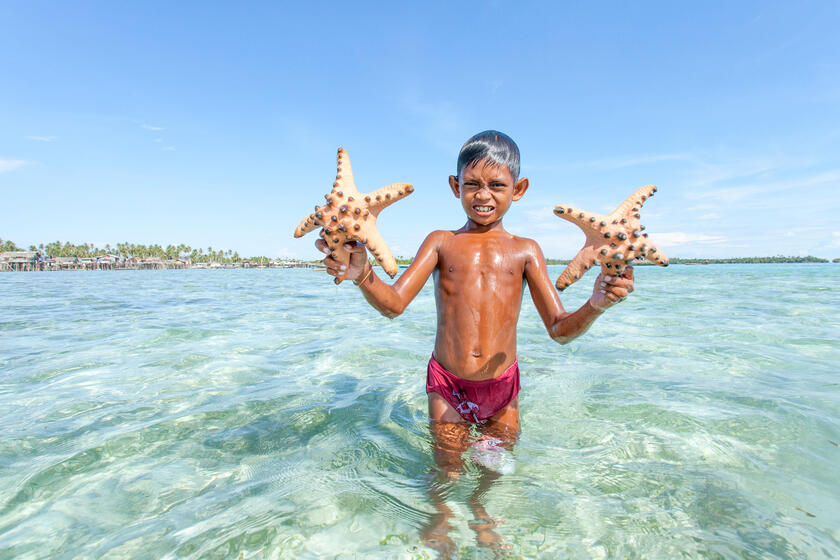
This tribe still wants to nurture the love of the ocean for the younger generation, so that the ocean will always be home to this tribe.
Yet for the Bajau, fishing is more than just a way of life, and water is more than just a resource. Central to their cultural identity is the relationship between the ocean and people. So when it comes to preserving the Bajau, we are not just preserving the people, but also the culture, along with the waters they have called home for centuries.





